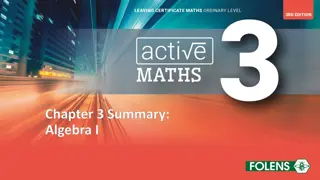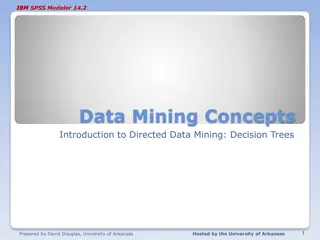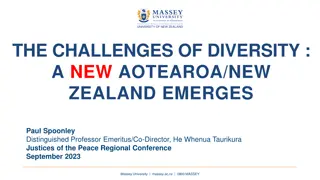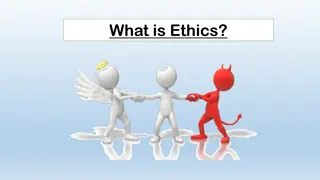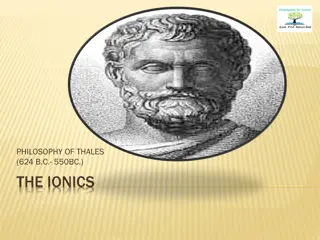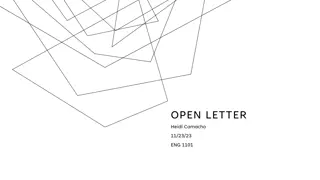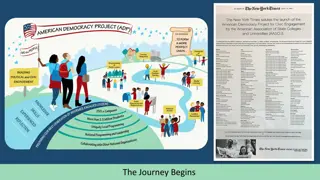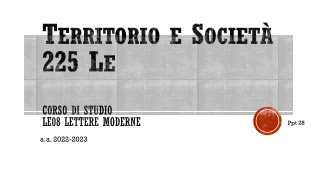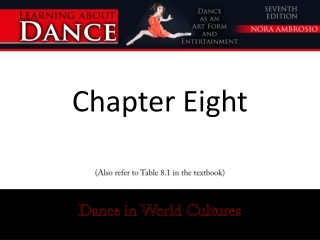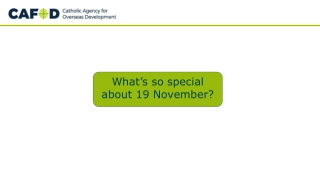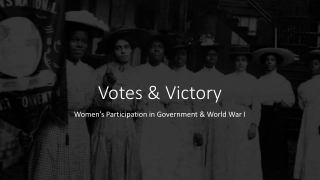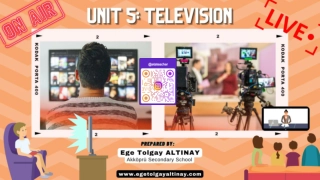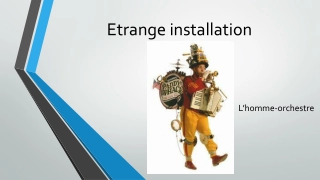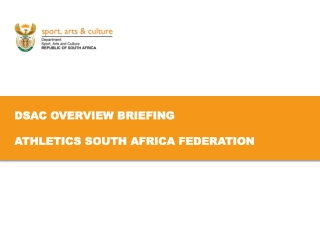Dividing the world of discourse
Explore how contextual dimensions like field, tenor, and mode shape language choices in text production, creating appropriate registers for diverse contexts. Understand why language variations differ in different genres and situations, influencing the coherence and cohesion of texts.
Download Presentation
Please find below an Image/Link to download the presentation.
The content on the website is provided AS IS for your information and personal use only. It may not be sold, licensed, or shared on other websites without obtaining consent from the author. Download presentation by click this link. If you encounter any issues during the download, it is possible that the publisher has removed the file from their server.
Presentation Transcript
above the sentence analysis the linguistic analysis of naturally occurring connected spoken or written discourse (Stubbs 1983: 1). Context Co-text Cohesion/ Coherence Register Genre
Context - the knowledge of the physical and social world, and the socio-psychological factors influencing communication, as well as the knowledge of the time and place in which the words are uttered or written. Co-text the context of the text itself. Cohesion - the way a text hangs together. Coherence what is it that makes a text make sense. Register - the diversity of textual variation in a language, i.e. the choices of language we make when we create a text. (Cutting: 2002; Thornbury: 2005)
What factors determine the choices of language we make when we create a text? Halliday (1964) identifies three components of the context that might impact on the language choices in text production: -the what of the situation what kind of social activity is going on, and about what sort of topic (what is called the field) - the who of the situation the participants, their relationship and so on (what is called the tenor) - the how of the situation the means by which the text is being created, e.g. e-mail, face-to-face talk, broadcast talk, written monologue and so on (what is called the mode). (Thornbury: 2005)
These three contextual dimensions field, tenor and mode determine what is called the register of the resulting text. That is to say, different configurations of these dimensions demand different kinds of choices at the level of grammar and vocabulary, and these choices create textual effects that we recognize as being appropriate to the context of the text s use. Thus, the register of a teenage magazine allows for such words as prezzie and snog that would be inappropriate in a children s encyclopedia or in academic correspondence, for example. By the same token, you would not expect expressions like ladies and gentlemen , are kindly requested to , we would also be pleased if , on a teabag wrapper. (Thornbury: 2005)
Identify the field, tenor and mode of the following text and, on that basis, the possible context in which the text was situated. Dear professor Thornbury, It appears that we will be including your Forum commentary in the spring issue. I would greatly appreciate it if you could send a disk copy of your response for production purposes to my office at San Francisco State University. Please label the disk with the word processing program you are using. Thank you in advance, Sandra McKay (Thornbury: 2005)
We have seen how the context variables of field, tenor and mode interact to determine the register of the text, realized at the level of words and grammar. Through repeated use, certain register combinations become institutionalized and are called genres. Genre- embodies the idea that there may be recurring features which are prototypically present in particular group of texts. The term genre originally came from literary studies, but its meaning has been extended to mean any frequently occurring, culturally-embedded, involves language. social (Thornbury: 2005) process which
Manner of production: The speaker has available to him the full range of 'voice quality' effects (as well as facial expression, postural and gestural systems). These paralinguistic cues are denied to the writer. Furthermore, the speaker must monitor what it is that he has just said, and determine whether it matches his intentions, while he is uttering his current phrase simultaneously planning his next utterance and fitting that into the overall pattern of what he wants to say and monitoring, moreover, not only his own performance but its reception by his hearer. He has no permanent record of what he has said earlier, and only under unusual circumstances does he have notes which remind him what he wants to say next. (Brown and Yule: 1983) and monitoring that, and
Manner of production: The writer, on the contrary, may look over what he has already written, pause between each word with no fear of his interlocutor interrupting him, take his time in choosing a particular word, even looking it up in the dictionary if necessary, check his progress with his notes, reorder what he has written, and even change his mind about what he wants to say. Whereas the speaker is under considerable pressure to keep on talking during the period allotted to him, the writer is characteristically under no such pressure. (Brown and Yule: 1983)
the syntax of spoken language is typically much less structured than that of written language spoken language contains many incomplete sentences, often simply sequences of phrases spoken language typically contains rather little subordination in conversational speech, where sentential syntax can be observed, active declarative forms are normally found. (Brown and Yule 1983: 15)
In written language an extensive set of markers exists to mark relationships between clauses (that complementisers, when/while temporal markers, so-called 'logical connectors' like besides, moreover, however, in spite of, etc.). In spoken language the largely paratactically organised chunks are related by and, but, then and, more rarely, by if. The speaker is typically less explicit than the writer: I'm so tired (because) I had to walk all the way home. In written language rhetorical organisers of larger stretches of discourse appear, like firstly, more important than and in conclusion. These are rare in spoken language. (Brown and Yule 1983: 16)
Heavily premodified noun phrases are quite common in written language. Written language sentences are generally structured in subject-predicate form. Topic-comment structure in spoken language: the cats + did you let them out. The occurrence of passive constructions is relatively infrequent in informal speech. Instead, active constructions with indeterminate group agents are noticeable, as in: Oh everything they do in Edinburgh + they do it far too slowly . (Brown and Yule 1983: 17)
In chat about the immediate environment, the speaker may rely on (e.g.) gaze direction to supply a referent: (looking at the rain) frightful isn't it. The speaker may replace or refine expressions as he goes along: this man + this chap she was going out with . The speaker typically uses a good deal of rather generalised vocabulary: a lot of, got, do, thing, nice, stuff, place and things like that. The speaker frequently repeats the same syntactic form several times over: I look at fire extinguishers + I look at fire exists + I look at what gangways are available + I look at electric cables what + are they properly earthed + are they properly covered. The speaker may produce a large number of prefabricated 'fillers': well, erm, I think, you know, if you see what I mean, of course, and so on. (Brown and Yule 1983: 17)
Brown, G. and G. Yule. (1983). Discourse analysis. Cambridge: Cambridge University Press. Cutting, J. (2002). Pragmatics and Discourse. London and New York: Routledge. McCarthy M. and R. Carter. (1994). Language as Discourse. London and New York: Longman. Thornbury, S. (2005). Beyond the sentence: Introducing discourse analysis. Oxford: Macmillan.





